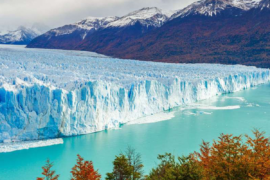Curiosities of the Nile River. Step into a world of intrigue and wonder as we embark on a journey to uncover.
The captivating secrets of the Nile River.
From its ancient origins to its modern-day significance.
The Nile has long been shrouded in mystery, holding the fascination of explorers, historians, and adventurers alike. In this riveting exploration, we will delve into the depths of this majestic waterway.
Unravelling its enigmatic past and shedding light on its cultural, ecological, and historical significance. Prepare to be enchanted by tales of pharaohs, marvel at the magnificent wildlife that calls the Nile home.
And discover the enduring legacy of this iconic river. Join us as we set sail on an expedition of knowledge and discovery.
Unlocking the wonders that lie within the mystical waters of the Nile.Curiosities of the Nile River.
It may interest you: Golden Egypt Tour

The Significance of the Nile River in Ancient Egypt
The Nile River played a central role in the civilization of ancient Egypt. Its annual flooding brought rich, fertile soil that allowed the Egyptians to cultivate crops and sustain their society. The Nile’s predictable flooding patterns became the lifeblood of the civilization.
Enabling the growth of food and supporting the development of a complex agricultural system. The Egyptians worshiped the river, attributing its floods to the god Hapy, who was believed to bring prosperity and sustenance.
The Nile also served as a vital transportation route, facilitating trade and communication between different regions of ancient Egypt. The river’s flow from south to north allowed for easy navigation, as boats could harness.
The power of the current to travel upstream and downstream. The Nile’s importance was further highlighted by the construction of magnificent temples and structures along its banks.
Showcasing the reverence and awe that the Egyptians held for this mighty waterway.
Despite the Nile’s significance, its exact source remained a mystery for centuries. Ancient Egyptians believed that the river originated from the underworld, with its waters flowing from the god Osiris’ tomb. It wasn’t until the 19th century that explorers finally discovered the source of the Nile in the highlands of East Africa.
Debunking the myths and legends that had surrounded its origins for millennia. The discovery of the Nile’s source opened up new possibilities for exploration and further.
Deepened the world’s fascination with this iconic river.Curiosities of the Nile River.
Geological Features of the Nile River
Stretching over 4,135 miles, the Nile River is the longest river in the world, winding its way through eleven different countries. The river is formed by two main tributaries: the White Nile and the Blue Nile. The White Nile originates from Lake Victoria in Uganda, while the Blue Nile begins in the Ethiopian Highlands. These two tributaries converge in Sudan, forming the Nile proper, which then flows northward through Egypt before emptying into the Mediterranean Sea.
One of the most remarkable geological features of the Nile River is the Nile Delta. Located in northern Egypt, the delta is a vast, fan-shaped area where the river branches out into numerous distributaries before reaching the Mediterranean. This fertile region has been a significant agricultural hub since ancient times, with its rich soils supporting the cultivation of various crops, including cotton, wheat, and citrus fruits. The Nile Delta is also home to bustling cities, such as Alexandria and Cairo, which have thrived due to their proximity to the river’s deltaic region.
The Nile River’s unique topography and geological features have not only shaped the landscapes through which it flows but have also influenced the development of civilizations along its banks. From the towering cliffs of the Nile Gorge to the expansive floodplains of the Nile Valley, the river has left its mark on the physical and cultural landscapes of the countries it traverses.
Wildlife and Biodiversity Along the Nile River
The Nile River is not only a lifeline for human civilization but also a haven for a diverse array of wildlife and plant species. Its waters support a rich and vibrant ecosystem, providing habitats for countless organisms. From the iconic Nile crocodile to the graceful hippopotamus, the river is teeming with fascinating wildlife.
One of the most famous inhabitants of the Nile is the Nile crocodile. These formidable creatures can reach lengths of up to 20 feet and have been a source of both fear and awe throughout history. The river’s banks also provide a sanctuary for numerous bird species, including the elegant African fish eagle and the vibrant African jacana. These birds rely on the rich fish populations in the river for their sustenance, forming an intricate web of life along the Nile’s shores.
The Nile River is also home to a variety of fish species, some of which are endemic to the river. The Nile perch, for example, is a prized game fish that can grow to impressive sizes, making it a favorite catch for anglers. Additionally, the river supports a diverse range of aquatic plants, such as papyrus reeds, which have been used for centuries by the Egyptians to create paper, boats, and even shelter.
The Nile’s biodiversity extends beyond its waters, as the surrounding landscapes are home to a wealth of terrestrial wildlife. The river’s floodplains and adjacent savannahs provide grazing grounds for large herbivores, including elephants, giraffes, and zebras. These animals form an integral part of the Nile’s ecosystem, contributing to its overall balance and diversity.
Cultural and Historical Sites Along the Nile River
The Nile River is not only a natural wonder but also a treasure trove of cultural and historical sites. From the majestic temples of Luxor and Karnak to the iconic pyramids of Giza, the Nile’s banks are adorned with remnants of ancient civilizations.
Luxor, once known as Thebes, was the capital of ancient Egypt and is home to some of the most impressive temples in the world. The Karnak Temple Complex, dedicated to the gods Amun, Mut, and Khonsu, is a sprawling complex of temples, pylons, and obelisks that showcases the grandeur and architectural prowess of the ancient Egyptians. Equally awe-inspiring is the Luxor Temple, a magnificent structure that was built to honor the god Amun-Ra and served as a center for religious ceremonies and festivals.
The pyramids of Giza, located on the outskirts of Cairo, are another testament to the ancient Egyptians’ ingenuity and mastery of architecture. The Great Pyramid of Giza, built as a tomb for the pharaoh Khufu, is the largest of the three pyramids and has stood for over 4,500 years as a testament to the power and wealth of the pharaohs.
As we journey along the Nile, we encounter numerous other historical sites, such as the temples of Abu Simbel, the Valley of the Kings, and the ancient city of Thebes. Each of these sites offers a glimpse into the rich tapestry of ancient Egyptian civilization, providing a connection to our past and a deeper understanding of the Nile’s cultural significance.
Famous Expeditions and Explorations of the Nile River
Throughout history, the Nile River has been a magnet for explorers and adventurers seeking to unravel its mysteries. From the ancient Greeks and Romans to European explorers of the 19th century, the quest to explore the Nile has captivated the imaginations of many.
One of the most famous expeditions to the Nile was led by the Scottish explorer David Livingstone in the mid-19th century. Livingstone ventured deep into the heart of Africa, aiming to discover the source of the Nile. His expeditions paved the way for further exploration and opened up new possibilities for trade and commerce along the river.
Another notable expedition was undertaken by the British explorer Henry Morton Stanley, who was sent by the New York Herald to find the missing Scottish missionary and explorer, Dr. David Livingstone. Stanley’s search for Livingstone took him through treacherous terrain and challenging conditions, ultimately leading to their historic meeting near Lake Tanganyika. Stanley’s expedition not only brought attention to the mysteries of the Nile but also sparked a renewed interest in exploring Africa’s interior.
In more recent times, the Nile River has continued to attract adventurers and explorers. In 2004, British adventurer Levison Wood embarked on a journey to walk the length of the Nile, covering over 4,000 miles on foot. His incredible feat captured the world’s attention and shed light on the challenges and beauty of the river and the countries it flows through.
These expeditions and explorations have not only expanded our knowledge of the Nile River but have also inspired countless others to embark on their own journeys of discovery. The allure of the Nile’s mysteries continues to beckon adventurers from all corners of the globe, ensuring that its enigmatic presence remains firmly etched in our collective imagination.Curiosities of the Nile River.
Modern-Day Uses of the Nile River
While the Nile River holds immense historical and cultural significance, it also plays a crucial role in modern-day life. The river continues to be a vital source of water, supporting the livelihoods of millions of people in the countries it flows through.
Egypt, in particular, heavily relies on the Nile for its water supply. The river provides the country with approximately 97% of its freshwater, making it a lifeline for agriculture, industry, and domestic use. The construction of the Aswan High Dam in the 1960s further enhanced Egypt’s control over the Nile’s waters, allowing for more efficient irrigation and hydroelectric power generation.
Other countries along the Nile, such as Sudan and Ethiopia, also depend on the river for their water resources. However, the distribution of the Nile’s waters has been a source of contention.
Leading to ongoing negotiations and disputes between these countries. The need for equitable sharing of the Nile’s waters highlights.
The importance of cooperation and sustainable management to ensure the river’s long-term viability.
Beyond its role as a water source, the Nile River has also become a popular tourist destination. Visitors from around the world come to cruise along the Nile.
Immersing themselves in the rich history and natural beauty that the river offers. The bustling cities of Cairo and Luxor.
With their ancient ruins and vibrant markets, serve as gateways to the Nile’s wonders, attracting tourists eager to explore this captivating region.
Conservation Efforts and Challenges Facing the Nile River
Despite its cultural and ecological significance, the Nile River faces numerous challenges that threaten its delicate balance. Pollution, overfishing, and habitat destruction pose significant threats to the river’s biodiversity and overall health.
Industrial and agricultural pollution, particularly from upstream sources, has led to the contamination of the Nile’s waters. Chemical runoff, sewage, and solid waste have all contributed to the degradation of water quality.
Impacting both the river’s wildlife and the communities that rely on it for their sustenance.
Overfishing is another pressing issue along the Nile River. The demand for fish has led to unsustainable fishing practices.
Which have resulted in declining fish populations and the depletion of certain species. The loss of fish not only affects the biodiversity of the river but also has economic and social consequences for the communities that depend on fishing as a livelihood.
Habitat destruction, primarily through deforestation and land conversion, has also taken a toll on the Nile’s ecosystems. Wetlands, which provide critical habitats for numerous species.
Have been drained and converted for agricultural use, further fragmenting the river’s biodiversity.
Efforts are underway to address these challenges and conserve the Nile’s natural resources. Conservation organizations, governments, and local communities are working together to implement sustainable practices.
Raise awareness, and protect the river’s fragile ecosystems. Initiatives such as reforestation, improved waste management.
And the establishment of protected areas are helping to mitigate the threats facing the Nile and ensure its long-term survival.
Fascinating Facts and Curiosities About the Nile River
The Nile River is not only a source of wonder but also boasts a collection.
Fascinating facts and curiosities that add to its allure. Here are some intriguing tidbits about this iconic waterway:
- The Nile River has two major tributaries: the White Nile and the Blue Nile. The White Nile is longer, while the Blue Nile carries more water and sediment.
- The Nile River is home to the Nile crocodile, one of the largest crocodile species in the world. These reptiles can live for over 70 years and are known for their powerful jaws and stealthy hunting abilities.
- The Nile River is a north-flowing river, unlike most rivers that flow southward. This unique characteristic is due to the river’s formation and the topography of the surrounding land.
- The Nile River has played a significant role in literature and mythology. It is mentioned in various ancient texts, including the Bible and the works of Herodotus and Pliny the Elder.
- The Nile River has inspired numerous artists, writers, and explorers throughout history. Its mystique and grandeur have been captured in paintings, poems, and novels, further cementing its place in our collective consciousness.
- The Nile River is not only a source of fascination but also an economic lifeline for many communities. Fishing, agriculture, and tourism are just a few of the industries that depend on the river for their livelihoods.
- The Nile River has witnessed the rise and fall of numerous civilizations, each leaving their mark on its banks. From the ancient Egyptians to the Nubians and the Greeks.
- Curiosities of the Nile River
Conclusion: The Enduring Allure of the Nile River
As our journey through the mysteries of the Nile River comes to an end.
We can’t help but be captivated by its enduring allure. From its ancient origins to its modern-day significance.
The Nile continues to captivate the hearts and minds of explorers, historians, and adventurers. Its significance in ancient Egypt, its geological features, the rich biodiversity it supports.
The cultural and historical sites along its banks all contribute to its timeless fascination.
The Nile River is more than just a body of water.
And a testament to the resilience of both nature and human ingenuity. As we navigate its mystical waters, we are reminded.
The interconnectedness of our world and the importance of safeguarding the treasures that it holds. The Nile River, with all its mysteries and wonders.
Continues to beckon us, inviting us to explore.
To learn, and to marvel at the extraordinary tapestry of life that it nurtures. Curiosities of the Nile River
Make your dream trip possible, receive a personalized quote and payment facilities to suit your needs
No compromises!





